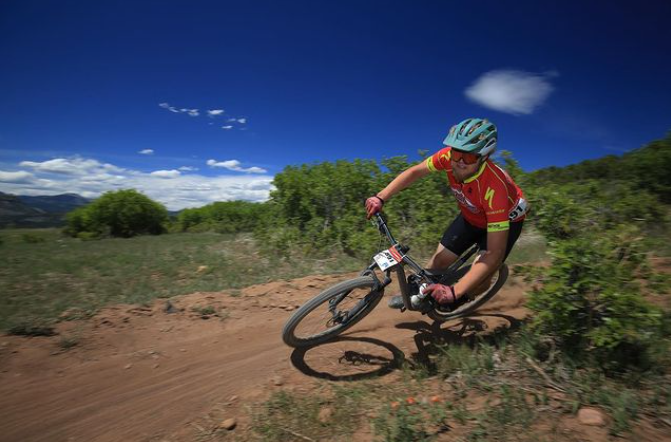Mountain bike terminology explained – an A to Z guide of jargon from the world of MTB
Confused by mountain bike terminology? We break down the lingo so you can understand what bike manufacturers and other MTB riders are talking about

Mountain bike terminology can be confusing at times, and it can seem like it has its own language. What does it mean, for example, for your suspension to 'bottom out', and what are 'braking bumps'? What exactly are the differences between the different types of mountain bikes? What are the different styles of riding such as cross-country mountain biking, trail mountain biking, and gravity mountain biking? And there are plenty of weird technical terms to get your head around too.
Here at Bike Perfect, we believe that mountain biking should be accessible to everyone. That's why we've created this list of mountain bike terminology – an A to Z of words and terms that you might hear at the bike shop or trailhead. Whether you're a beginner mountain biker or an expert, everyone has something new to learn.
Mountain bike terminology – a comprehensive A to Z of all things MTB
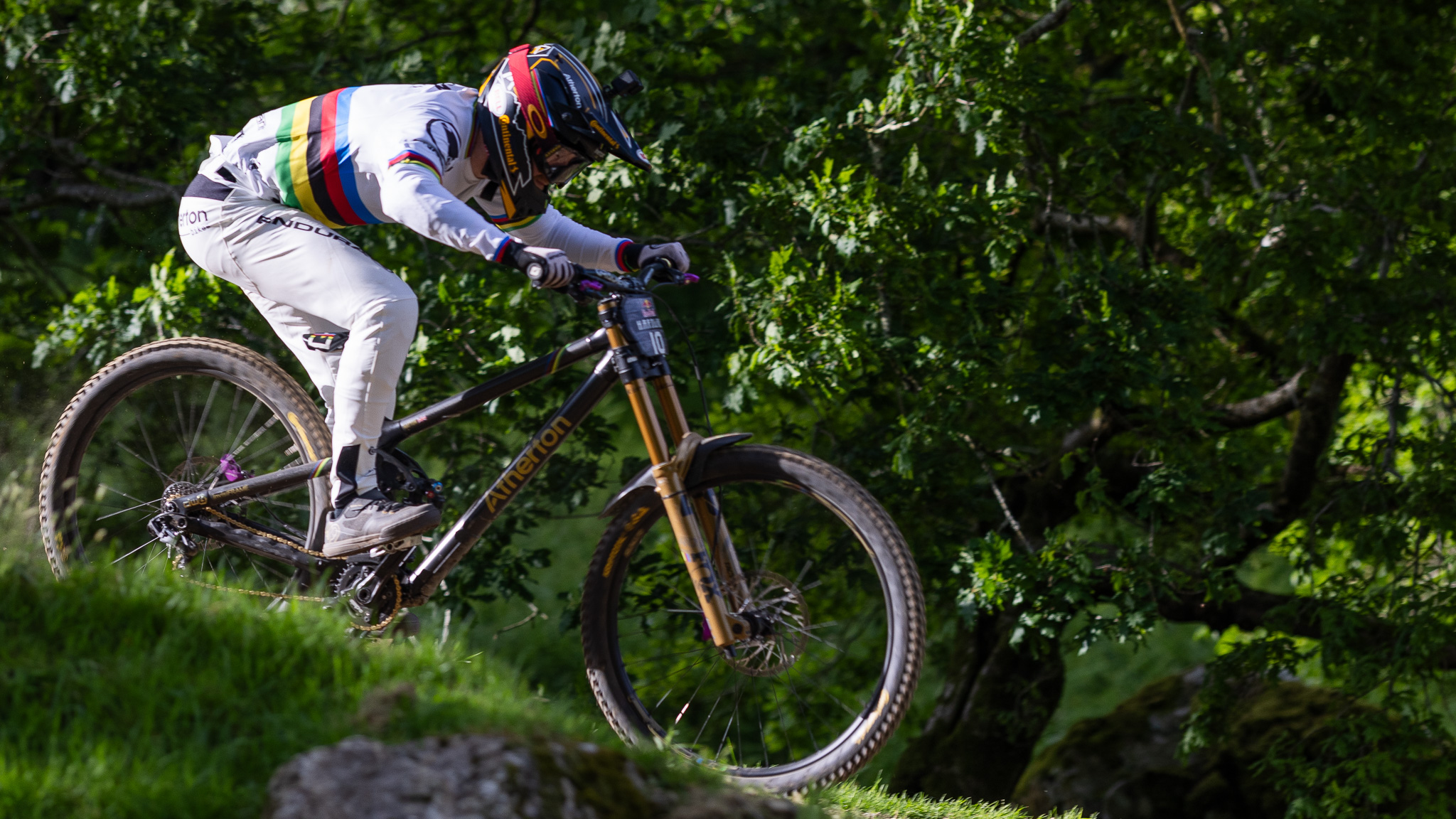
1. Bike, components and accessories
For this first section, we tackle everything you need to know about the best mountain bikes around. From mechanical terms to bike geometry and parts, we have you covered. When buying a new bike, you need to be familiar with things like wheelbase and head tube angle. Plus, knowing the different parts of a bike is a crucial mountain bike skill when fixing your bike or bringing it to a mechanic.
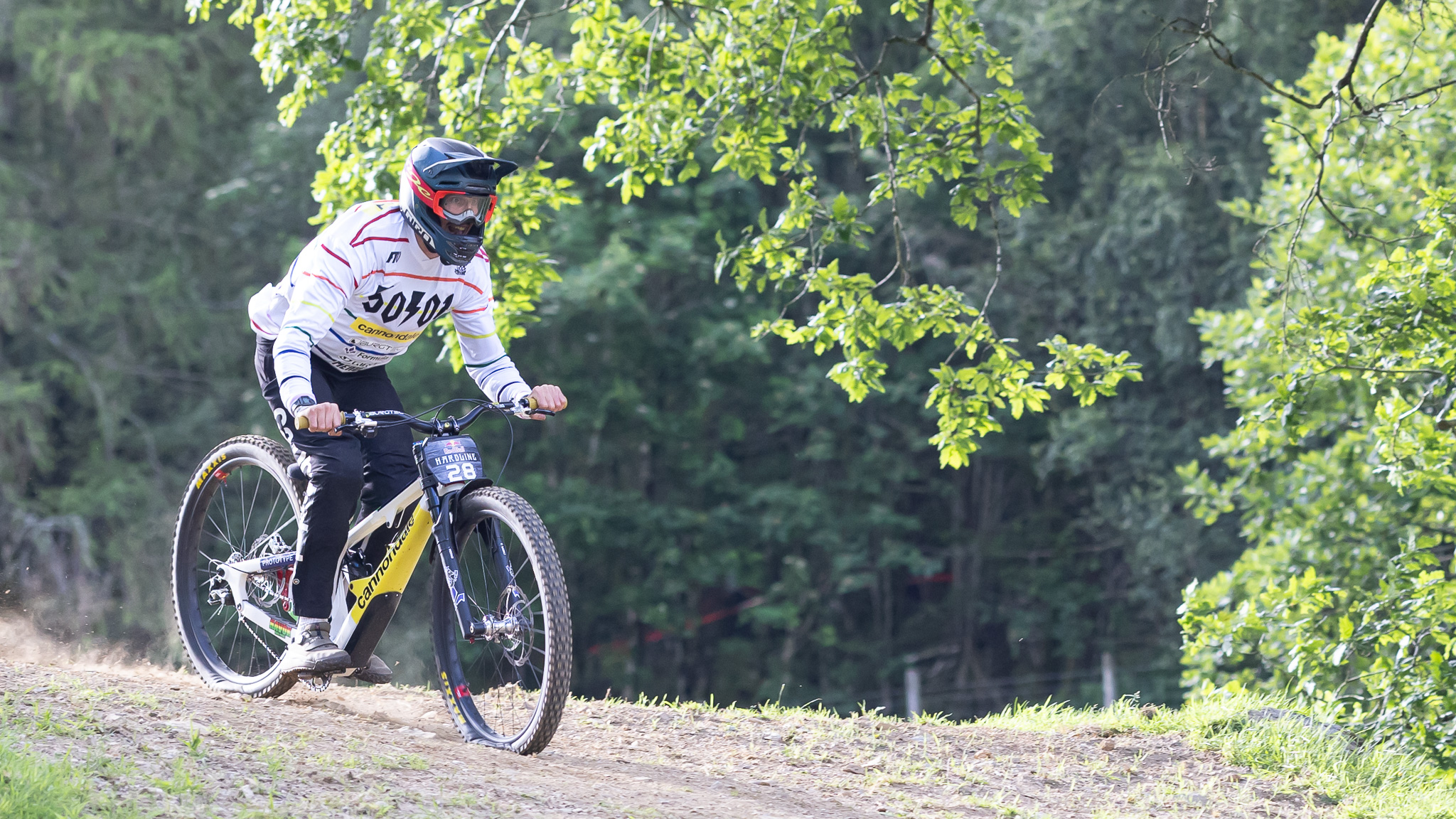
AXS: SRAM's wireless shifting ecosystem
Allen key: A tool used to adjust Allen head bolts. Comes in multiple sizes and configurations. Also called an Allen wrench
Alloy: A metal mixture. Often used to describe Aluminum frames
Aluminum: A common material to make bike frames and parts out of
Axle: The part in the middle of your hub that the wheel spins around
Barrel adjuster: A knob that adjusts shift cable tension
Bibs: Padded cycling shorts that feature shoulder straps. Can be worn alone or under baggy shorts
Bottle cage: A cage made from plastic, metal or carbon that connects to your frame and holds your water bottle
Bottom bracket: A set of bearings inside of a shell that sits inside your frame which allows the cranks to spin
Bottom out: When there is so much force that your bike's suspension travel is all used up an audible thud can be heard and felt
Brake: What you use to slow down
Brake bleed: Flushing hydraulic brake lines with clean hydraulic fluid to remove air bubbles and contamination. Also performed on hydraulic dropper posts
Brake caliper: Houses a disc brake's pads and pistons
Brake pads: Brake pads are what squeeze a brake's disc to slow down the bike
Brake piston: Pistons are pushed by hydraulic fluid to engage the brake pads
Cable housing: A protective hose that a cable sits in
Carbon fiber: A composite material used to make performance bike frames and parts
Cassette: The gears on the rear of the bike
Chain: Powers the bike when the pedals are turned
Chain guide: Installed to prevent the chain from slipping off a chainring. Not as common since 1x chainring technology has improved
Chain link: A chain is made up of individual links. A master link is the final link that connects the chain
Chainring: The front sprocket that's connected to the crank
Chain stay: The part of the frame that connects the bottom bracket to the rear dropouts
Chamois: The padding that is sewn into cycling shorts
Cleat: Connected to a shoe and clips into clipless pedals
Clipless: Pedals where you clip into the pedal with a cleat. The name is derived from when pedals had toe clips with straps
Clutch: A system in a rear derailleur that keeps the chain tensioned on rough terrain
Cog: A single gear on the cassette, also called a sprocket
Compound: Refers to the rubber formula and technologies in a tire
Compression (suspension): High-speed and low-speed compression settings on suspension adjusts how the suspension absorbs vibrations and impacts
Crank: The part that connects the pedals to the bike
Crank arm: The long piece of the crank that connects to the pedal
Crankset: Refers to both crank arms, the chainring, spindle and other crank-related hardware
Derailleur: The mechanism attached to the rear of the bike that shifts the gears
Derailleur hanger: The part that connects the derailleur to the frame
Disc brake: A brake that uses a disc as the friction mechanism, as opposed to a rim
Drivetrain: The entire system of components that's responsible for propelling the bike forward when you pedal
Dropouts: a pair of slots in your frame or fork that your wheel fits into
Dropper post: A seat post with adjustable height, commonly controlled by a bar-mounted lever. Can be hydraulic or cable-actuated
Fat bike: A bike with fat tires that can be ridden on deep snow and sand
Fork: The part that holds the front wheel on, can be rigid or have front suspension
Fork lowers: The lower tubes that the stanchions slide into when a suspension fork is compressed
Fork uppers: The upper tubes that slide into the fork lowers
Frame: The chassis that all the other bike parts are connected to
Freehub: Part of the hub that allows you to freewheel
Freewheeling: Riding on the bike without pedaling, also known as coasting
Front triangle: The front portion of a frame
Full-face: A helmet that includes a chin bar and fully protects the head
Half-shell: A "normal" helmet that does not have a chin bar
Handlebars: The bar that connects to the bike that is used to steer
Headset: The bearing interface that allows the fork to turn inside the headtube
High-pivot: High-pivot mountain bikes are claimed to offer improved suspension performance. The design raises the bike’s main pivot with an idler used to reduce chain growth and pedal kickback. This creates a more rearward axle path as the suspension compresses and gives plush-feeling suspension with better overall grip.
Hub: The component at the center of the wheel and connects to the wheel's rim via spokes. A freehub is in the rear of the bike and is what allows you to coast
Hydraulic: Any component that's controlled by hydraulic fluid rather than mechanical means
Index shifting: Modern bicycle shifting features divets in the shifter that allow each click of the lever to correspond with a particular gear
Inner width: The width of a rim measured from the inner rim walls
Knobs: The tread on your tires
Linkage: The parts of a frames full suspension system that connect a shock and frame
Mechanical: Bike parts that aren't controlled by hydraulics or electronics
Multi-tool: A small tool with multiple functions that can be fit into pockets, backpacks or even sometimes frames
Narrow-Wide: A term used to describe the alternating tooth shape of modern 1x drivetrains which holds a chain securely without a chain guide
Nipples: These control the spoke tension and are used to true a wheel
O-ring: The small rubber ring on suspension used to measure sag
One by (or 1x): A bike's drivetrain that uses a single front chainring
Pivot: The pivot on an MTB refers to how the main frame, rear shock and swingarm are connected. The pivots directly affect the motion of the rear wheel when the suspension moves with various pivot arrangements including single-pivot, high-pivot, four-bar or virtual-pivot
Plus tires: Wider than a normal tire but not as wide as a fat bike
Presta: The valve type for most tubes and all tubeless setups
Rear triangle: The rear part of a frame
Rebound: How fast or slow the fork recovers from being compressed
Rim: The part of the wheel that the tire sits on
Rim tape: Placed on the inside bed of a rim
SPD: Shimano's pedal and cleat technology
Sag: How much the suspension is compresses with the rider sitting on the bike
Shifter: The lever that you press to shift your gears
Shock: The rear suspension on a full-suspension bike
Singlespeed: A bike with only one gear attached to the freewheel
Slack: Used when referring to a bike's geometry which has lower than normal angles, predominantly head angle or seat angle
Spokes: The part that connects the hub and rim
Through-axle: A removable 12mm wheel axle that threads into your fork or rear dropouts
Tire casing: Technologies and materials that prevent slashes, punctures and flats
Tire sealant: Liquid that seals tubeless tires and can help prevent flat tires from punctures
Tire tread: The various knobs and patterns that make up the contact surface of a tire
Torque wrench: A wrench that can tighten a bolt to a specific torque, measured in newton meters
Torx wrench: A tool to tighten or loosen star-shaped Torx bolts
Tubeless: Tires that don't require a tube. Are sealed with tire sealant and allow riders to run lower tire pressure and prevent some puncture flats. Nearly all mountain bikers will run a tubeless set-up these days
UDH: Universal Derailleur Hanger is probably the most highly compatible MTB component ever made. Designed to be a sacrificial lamb in the event of an impact, it protects the frame and derailleur, is easily replaced and is seen on most modern MTBs
Wheelbase: The measurement between the two wheels. Part of the geometry that determines how a bike rides and handles
2. Out on the trails
In our next section on mountain bike terminology, we take on everything you may find out on the trails. Mountain bikers talk a lot about berms, jumps, drops, and rock gardens. A garden made out of rocks, what's that? Continue reading to find out!
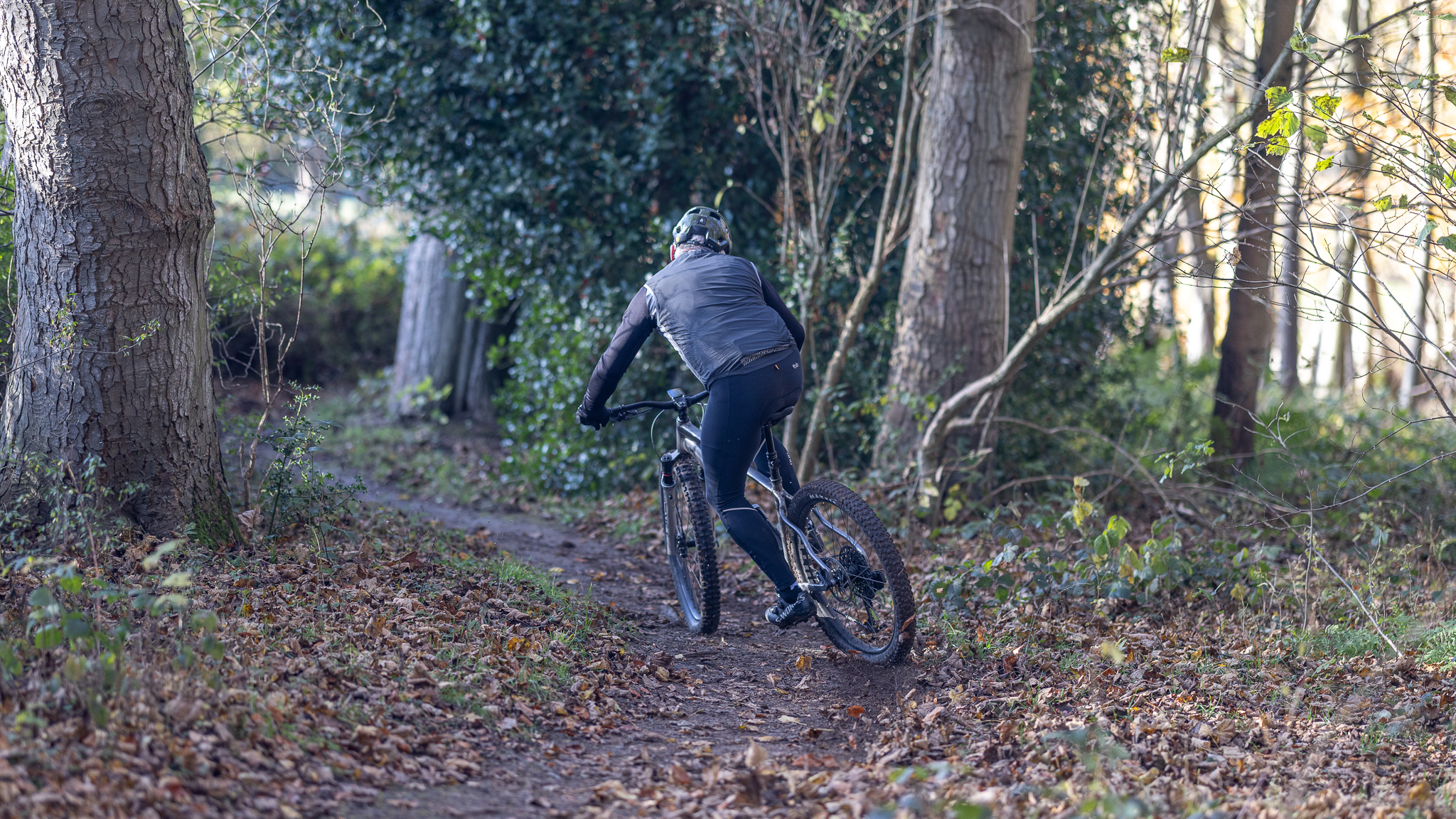
A-line: A challenging section of trail that may have features like jumps, drops, and rock gardens. Often there will be a B-line, or go-around, that less skilled riders can use. A-line is also the name of a very famous jump trail in the Whistler Bike Park
Apex: The middle point of a corner. Braking here will kill your momentum and increase the risk of crashing
B-line: An easier option compared to an A-line
Backcountry: General term to describe trails or terrain that is remote and hard to reach
Bench cut: When a trail is cut into a hillside, resembling a bench
Berm: A corner on a trail that has been intentionally banked to provide more grip and increase trail flow. Learning how to ride berms is an essential mountain biking skill
Bike park: Any sort of area that's been specifically built for mountain bikers. Predominantly refers to lift-served, downhill bikes parks at ski resorts, but can also refer to pump tracks, dirt jumps or even trail centers
Black: An expert skill level trail
Blue: An intermediate skill level trail
Braking bumps: Divets in the surface of a trail that form in and near corners and are caused by excessive braking. These are formed when a trail sees lots of repetitive use by riders
Braking point: The optimal point or general zone before a corner where a rider should brake to slow down before entering the corner or technical feature
Case pad: The top portion of a jumps landing that's built to accommodate casing. Even with a case pad, casing can cause crashes and is undesirable
Chicken run: A rollable alternative line next to a jump or drop
Chunder: A particularly rough section of trail
Chute: A particularly steep downhill section of trail. It's like riding down a laundry chute
Climb: Any uphill section of trail
Climbing trail: A trail that's primarily used to climb to the top of the hill
Compression (trail): Low points or transitions on trails that cause vertical G-forces and can throw unsuspecting riders off balance
Crux: A challenging point on a trail or individual feature that is essential to clear smoothly if a rider wants to successfully ride the trail
Descent: Any downhill section of trail
Directional: A trail that is designated as either uphill-only or downhill-only. Entire loops can be directional too
Dirt (types): Sandy, loamy, grippy, rocky, gravel, dry, loose, wet, muddy, moist, sticky, hero dirt, velcro, hardpack, kitty litter, moon dust, perfect, fun, dirty
Dirt jumping: The act of sessioning a set of dirt jumps on a dirt jump bike or BMX bike
Dirt jumps: A series of jumps made with dirt takeoffs and landings. Often with steep lips to prioritize air time and tricks
Double: A jump that has a gap between the takeoff and landing. Don't case it!
Doubletrack: A trail whose width is midway between singletrack and a road
Downhill park: A series of downhill trails of tracks that are often built at ski resorts
Drop: A vertical section of trail that forces riders to catch air, often off of a rock, cliff or man-made feature
Fall-line: The path of least resistance down a hill. Water flows down the fall-line, so trails that go directly down a fall line are subject to lots of erosion and rutting but can also have more grip
Feature: An individual obstacle on a trail like a jump, drop, or rock garden
Fire road: Refers to a dirt road. Also can be called an access road, landrover track or forest road
Flat corner: A corner that is flat, with no berm or banking to assist the rider
Gap: Any section of a trail where riders can jump from one part and land in another while catching air
Gradient: The steepness of a trail. Can be calculated and is measured as a percentage
Gravel: Small rocks found on a trail or road. Now a popular cycling discipline that encompasses riding on any type of dirt road
Green: A beginner skill level trail
Grip: How well your tires connect with the dirt
Hardpack: Dirt that is compacted
Hip: A jump where the take-off and landing are not in line with each other
Kicker: The take-off of a jump
Ladder bridge: A bridge made out of wood that resembles a ladder and can serve multiple purposes from crossing a stream to creating a drop or jump
Line: The path a rider takes down a section of trail
Lip: The top edge of a jump and the part of the jump that will most influence the take-off
Loose: Crumbly or gravelly dirt that is tricky to find grip or traction in. Can also refer to a rider with an out of control riding style
Multi-use: A trail that is open to bikes, hikers and equestrians too
Natural: Natural trails don't have many man-made features and have a primitive feeling like somebody decided to ride a bike across the landscape one day and a trail has formed
No fall zone: An area where the consequences of falling are particularly treacherous
North Shore: Ladder bridges, skinnies, and other features that were popular during the birth of the freeride discipline in the North Shore region of Vancouver, British Columbia, Canada
Off-camber: When the trail surface slopes perpendicular to the riding direction
Pro line: A trail that is so challenging that only pros or experienced experts will possess the skills to ride it
Pumptrack: A track of rollers, jumps, and berms arranged in a circuit designed to be ridden by pumping rather than pedaling
Red: A trail difficulty that is different in different countries, difficulty will usually fall between blue and black level trails. Sometimes also marks a pro line
Ridgeline: A trail that travels along a ridge
Rock garden: A series of rocks or just a rocky section of a trail with multiple lines
Rock roll: A large rock or slab of rock where riders roll down the rock surface
Roost: When a rider corners and kicks up dust and dirt
Scrub: A technique used by racers when hitting a jump to stay low to the ground and reduce airtime
Singletrack: A narrow trail, generally with one line choice
Skinny: A skinny bridge or log ride that test's riders' balance skills and coordination
Social trail: A trail that was built without being approved by land managers. Also called illegal trails, pirate trails, secret trails or unsanctioned trails. These types of trails are embedded in MTB culture, but getting caught building or riding them can result in a fine
Spine: A narrow, often steep trail that travels down a ridgeline. Is also used to refer to a jump with a steep take-off and landing and no gap
Step down: A jump where the take-off is higher than the landing
Step up: A jump where the landing is higher than the takeoff. Good for doing tricks
Switchback: A 180-degree turn in a trail. Used to travel up or down steep slopes
Tabletop: A jump where the gap between the takeoff and landing has been filled in with dirt. Also, a trick in which you lay the bike flat in the air
Technical: When a trail has lots of challenging features like rocks and roots
Tight: A trail with lots of tight turns and other obstacles that make finding flow more difficult
Track: Another name for a trail, usually downhill or enduro trails. Also could mean race track
Trail center: An area with multiple trails of different difficulty levels. Usually has amenities like a parking lot, bathroom, and trail signs. UK English
Trailhead: The start of a trail or multiple trails. Often times there's a parking area
Trail system: An area with multiple, connected trails. Similar to a trail center. American English
3. Riding terminology
Now that you know all about mountain bike trails, let's talk about riding those trails. Here's a taste of life on a mountain bike, whether it's being pinned on a group ride or finding the flow while drifting.
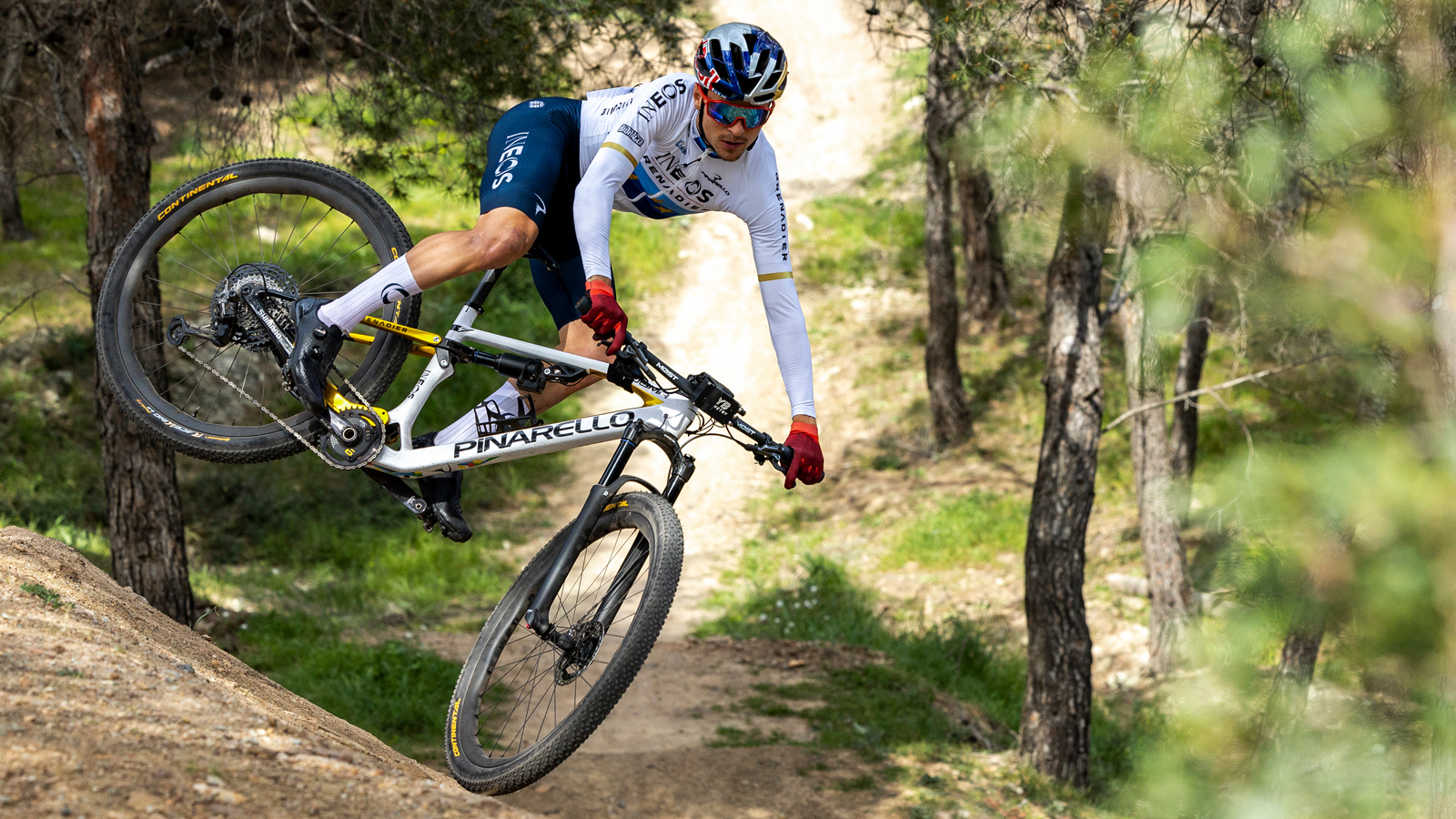
Bunny hop: Using your body to jump the bike into the air without a kicker or takeoff, primarily used to avoid trail obstacles such as rocks and roots
Burp: When cornering forces cause air to escape from a tubeless tire, a burping sound can be heard
Case: When you come up short on a jump and your front or rear wheel doesn't make the landing causing a harsh impact
Clean: Making it through a technical section without dabbing a foot
Dab: Putting a foot down while riding
Drift: When the tires momentarily lose traction in a corner
Dropped: When a rider can't keep up with the group
Endo: Grabbing your front brake so the rear of your bike leaves the ground and you balance on your front wheel only
Flow: The state of feeling completely smooth and in control when riding
Flow trail: A trail designed with berms and jumps to induce the feeling of flow
Group ride: An organized ride with multiple people. Also called a club ride
Huck: The act of hitting a particularly big jump or drop
KOM: King of the mountain. The fastest rider on a Strava segment. the fastest woman is the QOM or queen of the mountain. Derived from the Tour de France King of the Mountains climbing classification
Over the bars (OTB): When you fall forwards over the handlebars
Pinned: A rider is pinned when they are riding very fast at an expert level
Manual: Riding on the back wheel without pedaling
No drop ride: A ride that caters for all levels of rider ability and fitness
Rail: Hitting a corner perfectly, as if the rider was on rails
Send-it: Hitting a jump or drop with no fear
Session: The act of repeating a section of trail, jump or drop for fun or to practice skills
Shralp: Initiating a drift in a corner without brakes, usually when squaring off a corner
Stoppie: A rolling endo
Trackstand: Balancing on the bike while staying stationary
Wheelie: Riding on the back wheel while pedaling
Whip: Turning the bike in the air in a stylish manner
Washout: When a crash is caused by tires losing traction
4. Disciplines and competition
There are a wide variety of mountain bike disciplines, from cross-country and trail riding to downhill and freeride. We explain it all below as well as some racing terms that are good to know.
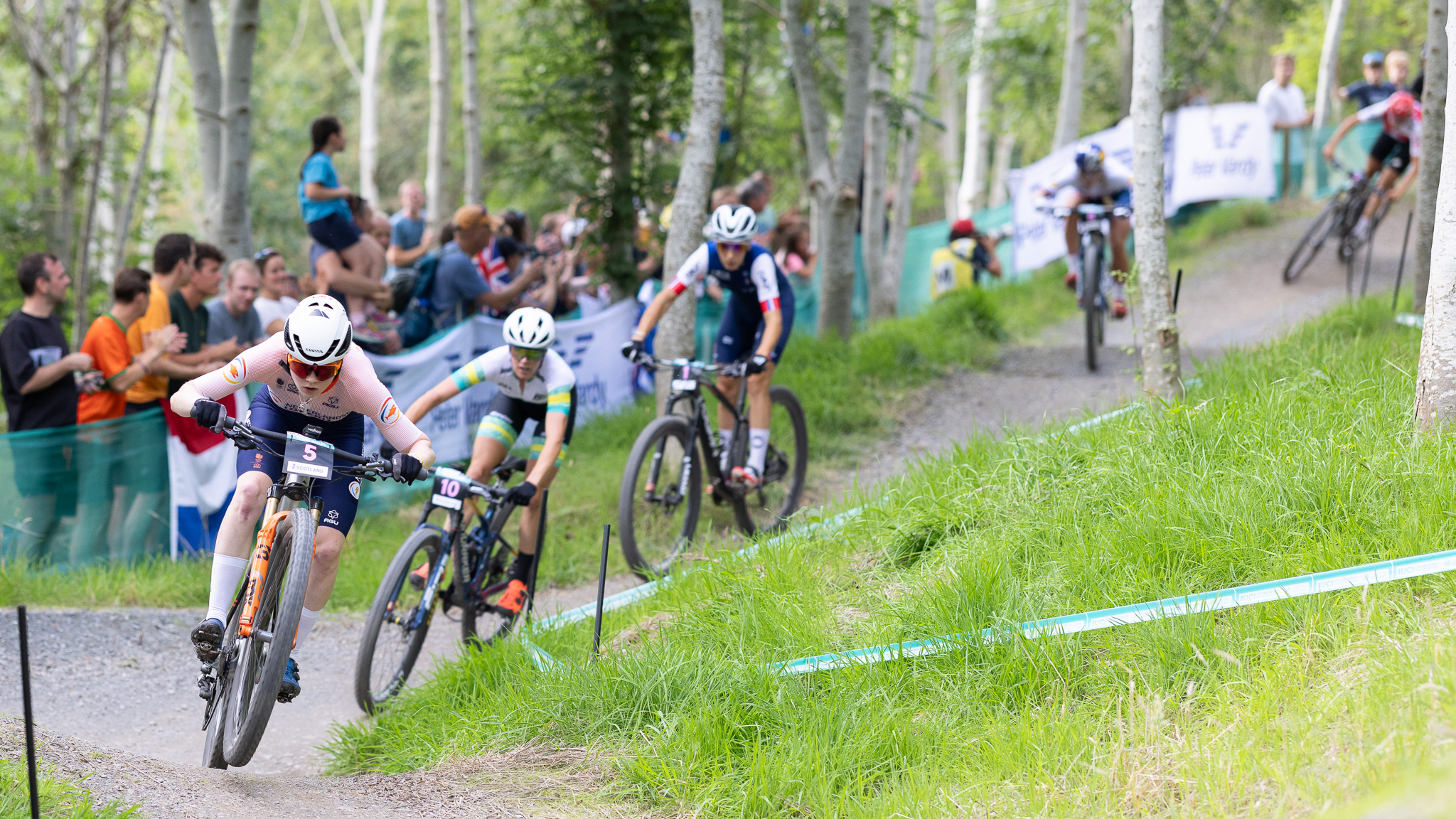
Adventure riding: A broad term to describe any type of riding or bikepacking that puts an emphasis on exploring and riding routes that you haven't before
All-mountain: A somewhat outdated term to describe a bike type and riding discipline that was the precursor to enduro riding and racing
Cross-country: Discipline of riding and racing where efficiency is prioritized on both the climbs and descents. Cross-country bikes are either hardtails or full-suspension bikes with up to 120mm of travel
Downhill: A riding and racing discipline where riders are shuttled to the top of the hill via car or ski lift and ride steep, challenging trails back down
Enduro: A riding and racing discipline where riders pedal a long course but are only timed on a series of downhill sections
Enduro World Series (EWS): The most elite professional enduro race series
Freeride: A type of riding and competition featuring big jumps, drops and other features where judging is based on tricks and style. Red Bull Rampage is a freeride event.
National Championships: A race in any country. The winner is referred to as the National Champion until the next National Championship race the following year.
Slopestyle: A specialized type of riding and competition featuring jumps, drops and features that are used to perform tricks
Trials riding: Navigating an extremely technical specialist course using advanced bike handling
UCI: Union Cyclist International. The international cycling governing body
World Championships: A race held every year at varying locations. The winner is proclaimed the World Champion until the next World Championships the following year
World Cup: The most elite level of downhill and cross-country mountain bike racing
Ryan Simonovich has been riding and racing for nearly a decade. He got his start as a cross-country mountain bike racer in California, where he cultivated his love for riding all types of bikes. Ryan eventually gravitated toward enduro and downhill racing but has also been found in the occasional road and cyclo-cross events. Today, he regularly rides the trails of Durango, Colorado, and is aiming to make a career out of chronicling the sport of cycling.
Rides: Santa Cruz Hightower, Specialized Tarmac SL4
- Paul BrettStaff writer
